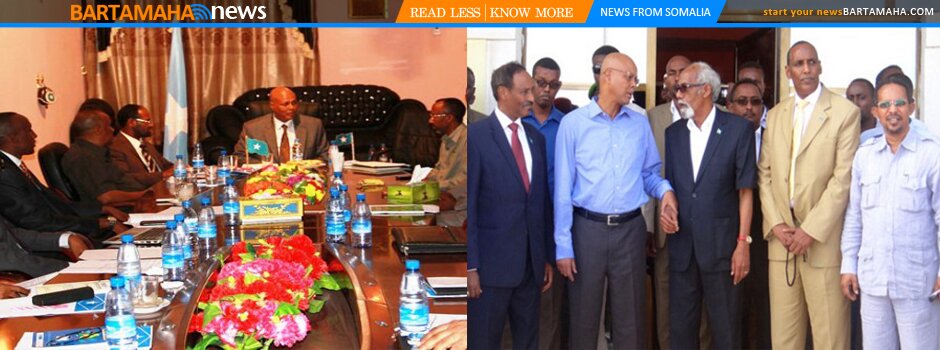Somalia’s Fragile Hope Is Linked to Ethiopia
By Hassan Hussein — MINNEAPOLIS — No sooner had Somalia’s clan-appointed legislators elected a president, the first in more than 42 years in this Horn of Africa nation, than Kenyan troops dislodged the Islamist military group Al-Shabab from its last stronghold, the port town of Kismayo. As important a turnaround as this is, it hardly signals that two decades of anarchy have been overcome.
Although African Union troops have diminished Al-Shabab’s capabilities, this translates neither into its defeat nor increased legitimacy of the fledgling Somalian government. More importantly, a viable exit strategy is as elusive now as it has always been.

Moreover, the death in August of Ethiopia’s Prime Minister Meles Zenawi, architect of Somalia policy, presents both opportunities and dangers. Although the first official act of his successor, Hailemariam Desalegn, was to attend the swearing-in of Somali’s new president, Hassan Sheikh Mohamoud, he lacks sufficient footing within the Ethiopia’s military, security, and political establishments to wield real power. He also faces a host of mounting internal challenges, not least the growing discontent among Ethiopia’s restive Muslim population.
Somalia has long confounded the world. Numerous attempts to reconstruct a legitimate state have failed. Turning the current glimmer of hope into the dawn of a new beginning requires a departure from the well-travelled road of leaving the region’s interlocking web of insecurity unaddressed.
The unstable nature of the region’s security is a fitting metaphor to describe both the redrawing of Africa’s sacrosanct colonial borders and the birth of liberation movements.
Ethiopia is the geographic, demographic, political, and economic center of the Horn. It shares boundaries with each of the countries of the Horn: Somalia, Sudan, Kenya, Djibouti, Eritrea, and South Sudan. All major ethnic groups living elsewhere also live in Ethiopia. Its religious, ethnic, and linguistic diversity is unrivalled. As such, developments in Ethiopia reverberate throughout the region.
The nature of Ethiopia’s regime fuels Somalia’s instability. While making up a mere 5.8 percent of the population, the predominantly Orthodox Christian Tigreans maintain absolute monopoly over all levers of power. Despite its dominance, the Tigrean oligarchy is possessed by a pervasive sense of paranoia.
This plays out in projecting an aggressive stand against both domestic and foreign threats, real and imagined. The new prime minister, Hailemariam, is from an even smaller ethnic group, the Walayta, which comprises 2 percent of Ethiopia’s population of 94 million. His elevation to the premiership has not altered Ethiopia’s power equation.
Somalia’s troubles are far from over. How to fully integrate the south with the autonomous region of Puntland and the de facto independent state of Somaliland is not even broached. Reconstituting Somalia would be a staggering endeavor even in the best of circumstances. More so when that task is entrusted to the deeply insecure Tigrean minority elite that harbor a perennial fear of Somalia becoming a launching pad for Ethiopia’s opponents. This remains the weakest link in the Somalia strategy.
The strategy confronts Somali leaders with a perennial dilemma: On the one hand, to appeal to their compatriots and risk arousing the fear of external powers, mainly Ethiopia or, on the other hand, to gain Ethiopian sponsorship and alienate their base. The lot of Mohamoud is no different. The attempt on his life in September during a meeting in Mogadishu highlights the fragility of the situation.
Al Shabab’s defeat is necessary but insufficient for Somalia’s regeneration. Solving Ethiopia’s internal insecurities through democratization is also essential. Al-Shabab is a byproduct of Ethiopia’s 2006 disastrous intervention in Somalia.
What has Ethiopia’s democratization to do with stabilizing Somalia? Everything.
To an extent, today’s Ethiopia is analogous to apartheid South Africa of the 1980s. Growing domestic resistance in South Africa plus brutal cross-border operations by the military wing of ANC in Angola, Mozambique and Namibia was a nightmare scenario for the apartheid regime that led to increased domestic repression. Once democratic elections in 1994 ushered in majority rule under Nelson Mandela, the country ceased to be an exporter of instability.
As was the case with apartheid South Africa, Ethiopia’s stability is a facade bought at a stiff price—repression of domestic dissent and Somalia instability.
Zenawi’s death opens a window of opportunity. Unless the nexus between regime insecurity in Ethiopia and Somalia’s instability is seized upon, the African Union’s courageous efforts could be easily reversed—Al-Shabab and a plethora of clan militia wait on the wings to fill the vacuum should the effort falter.
Hassen Hussein teaches courses on leadership and decision-making at the Minneapolis campus of Saint Mary’s University. He contributes to the website opride.com. He can be reached at.
Comments
comments
 Calendar
Calendar






































